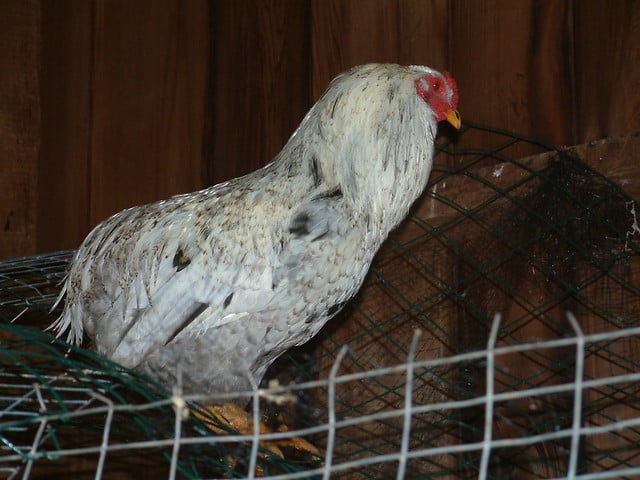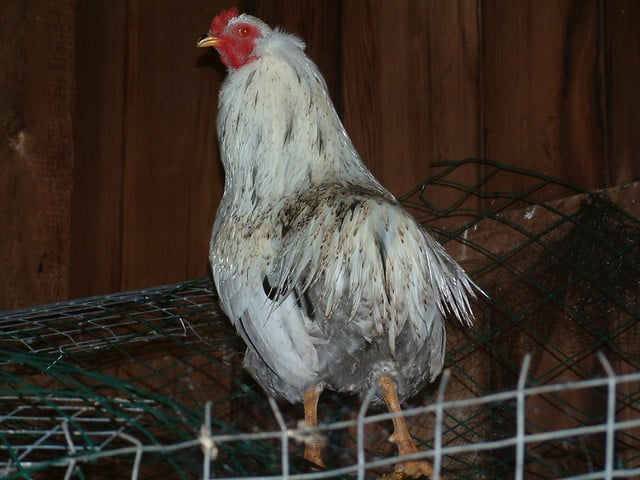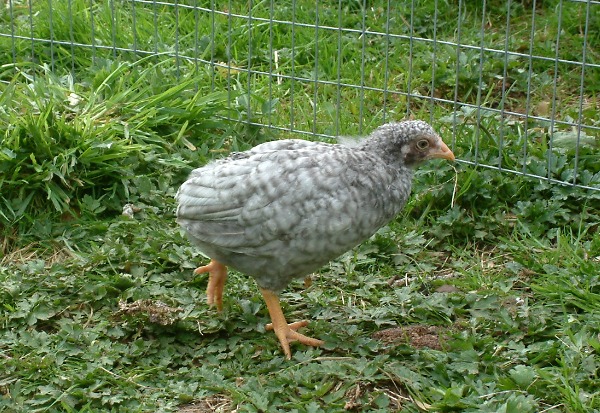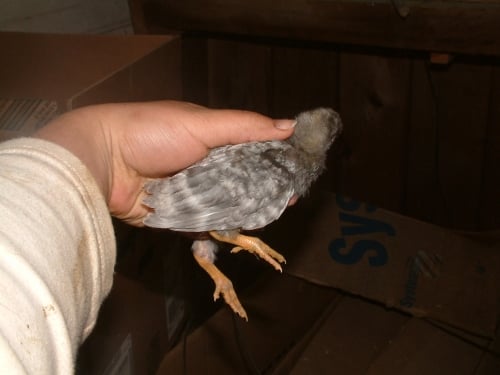- Oct 15, 2010
- 3
- 1
- 9
Hi, Im new here. I currently have silkies and cochins, theyre good pets but Id like something a little more productive. Ive been reading about the autosexing breeds in Europe such as the Legbar and would like to try and create something similar. So here is what Id like to create:
Autosexing
Dual Purpose
Blue Egg Laying
From what Ive read to create an autosexing variety you use a chicken with striped down as a chick such as a partridge variety crossed with a barred bird. Since barred is sex-linked when you continue to cross down the line you will end up with hens that have one copy of the barred gene and roosters with two copies. When they have two copies on the striped base it covers the stripe on the back of their heads so you can tell them apart from the females where the stripe is still visible. Here is a chart I found that shows how to make them.

I would like them to be good meat birds as well as good egg layers. I would have a hard time eating them but at least there would be a use for the roosters. I think Id have a hard time getting rid of them otherwise. Nobody really wants a chick they know is a rooster
 Anyway, I was thinking of using Easter Eggers and barred Rocks. Would this cross make a good eating chicken? I dont really know what makes a good meat bird. One problem I see is the Rocks are brown egg laying so when crossed with the EE they would be green instead of blue which is ok but I prefer blue. Maybe barred Hollands are a better choice? Does anyone have any suggestion?
Anyway, I was thinking of using Easter Eggers and barred Rocks. Would this cross make a good eating chicken? I dont really know what makes a good meat bird. One problem I see is the Rocks are brown egg laying so when crossed with the EE they would be green instead of blue which is ok but I prefer blue. Maybe barred Hollands are a better choice? Does anyone have any suggestion?
If yall think this is a good idea I may start this project this spring. Anyone want to join me? I plan on using hatchery stock since Im not going to be showing them and they will not be a recognized breed anyway. The only advantage I can think of by starting with quality stock is using true araucanas to add a better blue egg color other than that I think hatchery stock would work fine. What do you think? will this work? any more information or suggestion would be awesome. take care
P.S. Just for fun, what do you think they should be called? I like Loxbar since I live in Loxley even though it doesnt come from the original breeds names.
Autosexing
Dual Purpose
Blue Egg Laying
From what Ive read to create an autosexing variety you use a chicken with striped down as a chick such as a partridge variety crossed with a barred bird. Since barred is sex-linked when you continue to cross down the line you will end up with hens that have one copy of the barred gene and roosters with two copies. When they have two copies on the striped base it covers the stripe on the back of their heads so you can tell them apart from the females where the stripe is still visible. Here is a chart I found that shows how to make them.
I would like them to be good meat birds as well as good egg layers. I would have a hard time eating them but at least there would be a use for the roosters. I think Id have a hard time getting rid of them otherwise. Nobody really wants a chick they know is a rooster

If yall think this is a good idea I may start this project this spring. Anyone want to join me? I plan on using hatchery stock since Im not going to be showing them and they will not be a recognized breed anyway. The only advantage I can think of by starting with quality stock is using true araucanas to add a better blue egg color other than that I think hatchery stock would work fine. What do you think? will this work? any more information or suggestion would be awesome. take care
P.S. Just for fun, what do you think they should be called? I like Loxbar since I live in Loxley even though it doesnt come from the original breeds names.






